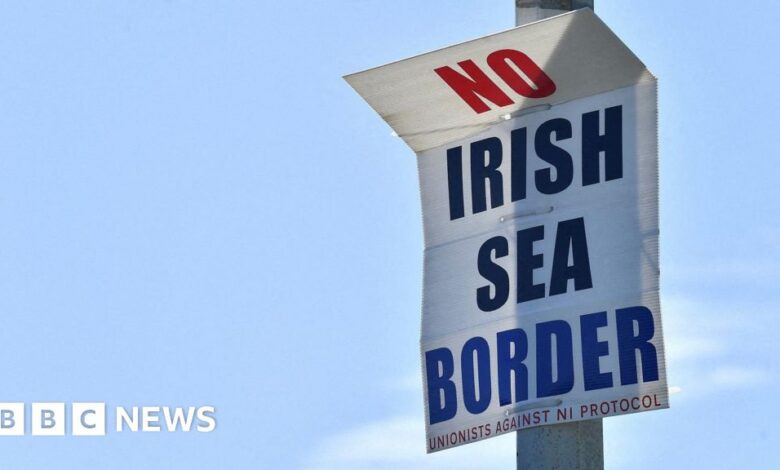Unionist parties to pull Stormont Brake for first time

 Reuters
ReutersUnionist parties in the Northern Ireland Assembly will pull the Stormont Brake for the first time in an attempt to stop new EU rules on packaging and labelling of chemicals from applying in Northern Ireland.
The brake is part of Northern Ireland’s Brexit deal and gives the Stormont assembly the power to object to changes to EU rules that apply in Northern Ireland.
It needs the support of 30 assembly members from at least two parties.
All eligible unionist assembly members have supported a DUP motion for the pulling of the brake.
‘Host of new requirements’
Once that has formally happened at the assembly it will be up to the British government to judge if the brake has been used appropriately.
Meanwhile, the Stormont committee which scrutinises relevant EU legislation has published a report on the rules.
It has been unable to reach a view on whether the rules have ‘a significant impact on everyday life of communities in Northern Ireland.’
Its finding may influence the government’s view on whether the rule meets the threshold on the use of the brake.
The main condition for it is that it must be shown that the rules would have “a significant impact specific to every day life of communities in Northern Ireland” in a way that is liable to persist.
DUP leader Gavin Robinson said: “This EU regulation introduces a host of new requirements for labels attached to chemical products, including new minimum font sizes and rules around spacing.
“This would make current labels unusable for the majority of products.
“Critically, these changes would not be required for products on the market in Great Britain.
“The Chemical Industries Association (CIA), which represents chemical and pharmaceutical companies across the United Kingdom, has assessed that the regulation would have a significant, negative and prolonged impact on everyday life in Northern Ireland.”
What are the government’s options?
If the government assesses the brake has been used appropriately it then begins a process with the EU.
The Joint Committee – the UK-EU body responsible for overseeing the Brexit deal – is required to discuss the rule in question.
Once those discussions are concluded the UK government can either send it back to the assembly for a cross-community vote known as an applicability motion or decide the rule should not apply in Northern Ireland.
At that stage the government could still avoid a Stormont vote if it assesses there are “exceptional circumstances” including an assessment that the rule would not create a new regulatory border between Great Britain and Northern Ireland.
If the UK ultimately decides not to adopt the rule, the EU can take “appropriate remedial measures”, which could include measures to address the fact that NI goods may no long fully comply with EU law.
In March, Stormont used an applicability motion to block a new EU rule on the protection of geographical indications (GI) for craft and industrial products.
At that time the government said it had noted the assembly vote and in October said it “continues to evaluate the implications.”
What is the Stormont Brake?
 Pacemaker press
Pacemaker pressThe Stormont Brake was introduced last year as part of the Windsor Framework.
It gives the Northern Ireland Assembly a greater say on how EU laws apply to Northern Ireland – a key demand of the Democratic Unionist Party’s before it ended its boycott of power-sharing.
The framework is the special Brexit deal which applies to Northern Ireland and means it continues to follow some EU laws relating to goods.





